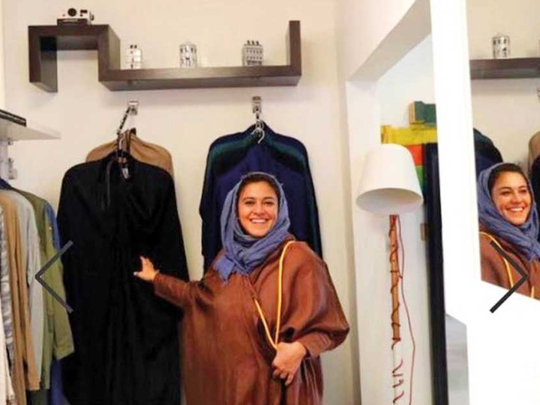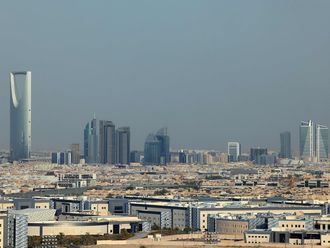
Jeddah: More women are donning colourful abayas in Saudi Arabia.
The change has come after Crown Prince Mohammad Bin Salman said recently that the abaya is not mandatory in Islam.
“The laws are very clear and stipulated in the laws of Sharia: that women wear decent, respectful clothing, like men,” Prince Mohammad told CBS Television last month.
“This, however, does not particularly specify a black abaya. (It) is entirely left for women to decide what type of decent and respectful attire to wear.”
Until a formal edict comes however, designers such as Eman Joharjy are cashing in on the growing popularity of colourful “sports abayas” as they have been called.
“There is a big demand,” Joharjy told AFP at her fashion studio in Jeddah.
“Having them in different colours is empowering.”
Akin to a zippered jumpsuit, sports abayas envelop a woman’s body but offer greater mobility for sporting activities, in contrast to the classic baggy version where tripping on the hem of the flowing garment is a common risk.
The 43-year-old’s designs come in colours like pistachio green, beige and white - more tolerable in the kingdom’s scorching heat - and she uses natural fabrics, including French poplin, that do not cling to a sweating body.
One of the early pioneers of the trend, Joharjy said she began designing - and donning - sports abayas publicly in 2007.
“I designed it for myself, because it’s practical,” she said.
“You zip up and are ready to go.”
Abayas have evolved over the years, with new patterns, fabrics and embellishments, and they are sometimes worn in the kingdom with baseball-style caps over headscarves.
The latest fad is an eye-catching ensemble of “soccer-themed abayas” - in the colours of the local teams, a new way for female sporting fans to cheer for their favourite players.
Such fashion trends are gaining momentum amid the kingdom’s liberalisation drive, including a historic royal decree allowing women to drive from June and enter sports stadiums for the first time.
The government is also seeking to jump-start women’s sports and is moving toward compulsory physical education classes for girls, after a ban was lifted in 2014.
Saudi officials recently announced that women would be able to participate next year in the Riyadh international marathon, previously a male-only event.
Muslim cleric Shaikh Ahmad Bin Qassim Al Ghamdi added a new wrinkle to the debate when he dismissed the long-held view that black was the only colour for abayas permissible in Islam.
“The cloak is meant for maintaining a modest look and it does not have to be black,” the former chief of the religious police in the holy city of Makkah, told Saudi-owned Al-Arabiya television last month.
Back at Joharjy’s studio, a longtime client Marwa Al Hadi walked in wearing one of her designs with magenta sneakers.
“Abaya is like the Indian saree, it is part of our identity,” Joharjy told her, as they weighed in on the future evolution of the garment.












